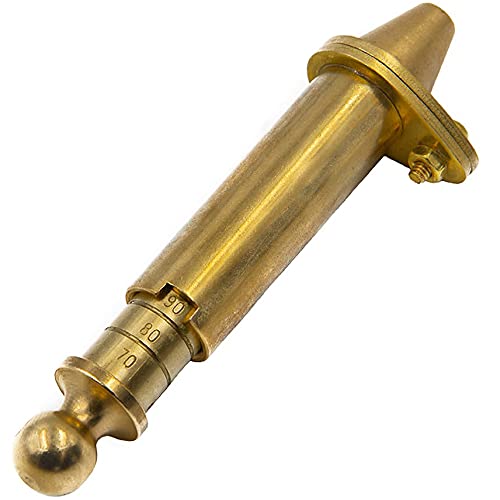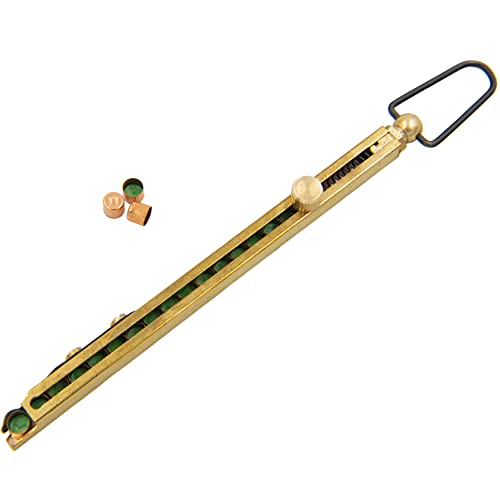I know you old timers are awair of this but some of the newer people may be unaware of the recommended method of loading a cast round ball.
When the ball is cast, the melted lead flows thru a small hole in the mold and is cut off after the lead hardens. The remnants sticking out of the ball is called a sprue.
Some (including me) recommend that this sprue should be located "up" when you place the ball on the patch during loading.
The reason for this is the interior of cast balls almost always has a void right under this sprue. This is caused by the lead freezing in the gate (mold hole) before the lead in the mold is solidified. The shrinkage of the lead in the mold trys to suck more lead thru the gate but cannot so a little void or bubble forms there. This makes the ball out of balance.
If the out of balance void is directly on the axis of the bore it has little effect on the trajectory. If it is located to the side, the ball will wobble during its flight which may lead to "flyers". (Those shots which seem to go wide of the mark for no apparent reason).
Some will argue that this is pure hooie but I feel if there is a chanch of it screwing up my shot, it will (usually when I've got a good group going). Besides, it only takes a second or two to position it in the right place.
If you shoot Hornady or other SWAGED balls they are solid lead without voids of any kind and the above comments do not apply but for tight-wad's like me that likes the idea of getting 40 (.50 cal) or 50 (.45 cal) balls for about a bucks worth of lead by casting my own it might make a difference.
When the ball is cast, the melted lead flows thru a small hole in the mold and is cut off after the lead hardens. The remnants sticking out of the ball is called a sprue.
Some (including me) recommend that this sprue should be located "up" when you place the ball on the patch during loading.
The reason for this is the interior of cast balls almost always has a void right under this sprue. This is caused by the lead freezing in the gate (mold hole) before the lead in the mold is solidified. The shrinkage of the lead in the mold trys to suck more lead thru the gate but cannot so a little void or bubble forms there. This makes the ball out of balance.
If the out of balance void is directly on the axis of the bore it has little effect on the trajectory. If it is located to the side, the ball will wobble during its flight which may lead to "flyers". (Those shots which seem to go wide of the mark for no apparent reason).
Some will argue that this is pure hooie but I feel if there is a chanch of it screwing up my shot, it will (usually when I've got a good group going). Besides, it only takes a second or two to position it in the right place.
If you shoot Hornady or other SWAGED balls they are solid lead without voids of any kind and the above comments do not apply but for tight-wad's like me that likes the idea of getting 40 (.50 cal) or 50 (.45 cal) balls for about a bucks worth of lead by casting my own it might make a difference.



























